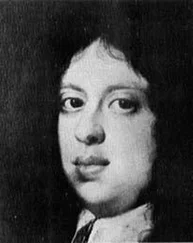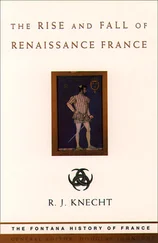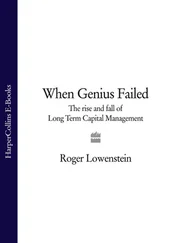Cosmas, St, 37
Cossa, Baldassare, Cardinal, later Pope John XXIII, q.v . (c. 1370–1419), 35, 87
Council of Bâle (1431–49), 64–5
Council of Constance (1414–18), 34, 35–6
Council of Florence (1438–45), 64, 66–8, 69, 87, 110
Council of Pisa (1409), 34
Craon, Prince Marc de, 309
Credi, Lorenzo di (1459–1537), 192
Crespi, Giuseppe Maria (1665–1747), 300
Cretensis, Demetrius, 170
Crusades, preached by Calixtus III, 86;
Pazzo de’ Pazzi and, 131
Curia, the, 95, 129
Dami, Giuliano, 303, 305, 307
Damian, St, 37
Dante Alighieri (1265–1321), 70, 171
Dati, Gregorio, 28
Del Cimento , 284, 285, 287
Democritus, 297
Diogenes Laertius, 47
Domenico da Pescia, Fra, 196, 198, 199, 200
Domenico, Giovanni di, 317
Donatello, prop . Donato di Betto Bardi (1386–1466), Michelozzo and, 75; his history, 90; his works, 90–1, 192, 312, 315, 318, 329; Cosimo di Giovanni and, 91, 92, 108; and the Genoese merchant, 91–2; attitude to money, 92; in old age, 92; Piero di Cosimo and, 107–8; and the tomb of John XXIII, 316; his gallery, 320
Donati, Lucrezia, 116, 121, 146
Doni, Paolo di, 108
Dovizi da Bibbiena, Bernardo, 206, 217, 227, 232
Dovizi da Bibbiena, Piero, 178, 206
Duomo, the, see Florence, Santa Maria del Fiorc, Cathedral of
Edward III, King of England (1312–77), 39
Edward IV, King of England (1442–83), 158
Eleonora, Princess of Naples, 121
Eieonora of Toledo, see Medici, Eleonora de’
Elizabeth, Queen of Spain (1692–1766), 305
Entragues, Robert de Balzac, 210
Este, Alfonso d’, see Ferrara, Duke of
Este, Borso d’, see Ferrara, Duke of
Este, Ercole d’, see Ferrara, Duke of
Este, Ippolito d’, Cardinal, 217
Este, Isabella d’, 324
Fancelli, Luca, 328
Farnese, Alessandro, Cardinal, later Pope Paul III, q.v . (1468–1549), 238
Farnese, Elizabeth, see Elizabeth, Queen of Spain
Farnese, Ottavio, Duke of Parma and Piacenza, 264
Federigo, Prince of Naples, 103, 153
Fedi, Pio, 329
Ferdinand the Catholic, King, V of Castile, II of Aragon and Sicily, and III of Naples (1452–1516), joins the Holy League, 194; and Louis XII, 201; and Leo X, 220, 222; death of, 223
Ferrai, Luigi Alberto, 264
Ferrante, Don, 84
Ferrante, King of Naples (1423–94), 103; and Lorenzo the Magnificent, 117, 154; and Sixtus IV, 130, 154; and Florence, 148, 159; and the Sforzas, 151, 183; the Signoria distrusts, 153; and the Turkish invasion, 159; Savonarola and, 182; death of, 183
Ferrara, Cosimo di Giovanni at, 54; disastrous Council of, 65–6; Savonarola’s forebears at court of, 178; Leo X and, 237
Ferrara, Alfonso d’Este (I), Duke of (1476–1534), 208, 222
Ferrara, Alfonso d’Este (II) Duke of (1533–97). 269
Ferrara, Borso d’Este, Duke of, 105, 117
Ferrara, Duchy of, 219
Ferrara, Ercole d’Este, Duke of, 150, 151, 152
Ferrara, Lucrezia d’Este, Duchess of, née Medici, Lucrezia di Cosimo de’ (1544–61), 269
Ferrara, Marquis of, 50, 54
Fern, Antonio, 299
Ferri, Cirro, 285
Ferrucci, Francesco, 250, 327
Festivals, pageants of the Magi, 111; tournament to celebrate wedding of Lorenzo the Magnificent, 116; Florence famous for festivities, 119; Calendimaggio , 119, 297; of St John the Baptist, 119–20, 289; Lenten and Easter, 120; for Princess Eleonora of Naples, 121; Savonarola’s orders on carnivals, 192; encouraged under Cardinal Giovanni, 216; for the election of Leo X, 217–18; reception of Leo X in Florence, 220–2; celebrations for title of Grand Duke, 266; Cosimo I encourages, 273; for the wedding of Ferdinand I, 280–1; for the wedding of Maria de’ Medici and Henry IV, 281; for the wedding of Cosimo II, 282; for the wedding of Cosimo III, 289; Grand Prince Ferdinand arranges a joust, 308; abolition of Medici public holidays, 310; Scoppiv del Carro , 321–2
Fetti, Fra Mariano, 226, 231
Fiamingo, Niccolò, 274
Ficino, Marsilio (1433–99), Cosimo Paler Patriot and, 68–9, 77; and Lorenzo the Magnificent, 103, 113, 122, 165; Poliziano and, 122; his villa, 316
Filarete, Antonio Averlino, 107
Filelfo, Francesco (1398–1481), 47–8, 51, 59
Florence, in 15th century, 19–21; government of, 25, 26–7, 28, 32; banner of, 26; territorial expansion, 32; trade, 33; the florin, 33; Martin V in, 36; Cosimo Pater Patriot returns to, 58; taxation in, 61–2; and the Council of Florence, 65–6, 68; entry of Eastern Emperor into, 66; Medici generosity for adornment of, 69; Cosimo Paler Potrioe on, 73; Cosimo Pater Patriot and foreign policy of, 79, 82–4; and Milan, 79–80, 83, 84, 105, 130; war declared on, 84, 148; Party of the Hill and Party of the Plain, 104, 105; return of the Medici, 105–6, 212, 214, 249, 251; and Venice, 106, 130; pageants and festivities in, 111, 118–19, 217–18; Florentine wedding customs, 117–18; lions of, 119, 173, 327; Milanese state visit to, 124; and die Papacy, 129, 130, 159–60; rioting in, 140; War of the Pazzi Conspiracy, 149–50, 151, 152, 155; and Naples, 155; Cennini’s printing press in, 169; Savonarola and, 179, 180, 181, 182, 191, 193, 197; attitude to French invasion of Italy, 184; Charles VIII enters, 189–90; Cinozzi on, 193; and France, 208; in decline, 210, 306–7; national militia of, 211, 213, 214; reception for Leo X, 220–2; flood and famine in, 223; Cardinal Giulio’s administration, 236; problem of government of, 237; resentment against Passerini and Clement VII in, 248–9; organization of defence of, 249; siege of, 250; surrenders to the Pope and the Emperor, 250–1; resentment against Alessandro de’ Medici, 254; Florentine navy, 266–7; under Ferdinand 1, 279
Accademia della Crusca, 323, 330
Baptistery, the, see San Giovanni Battista, church of
Bargello, the, Podestà at, 27; Albizzi intends to seize, 56; executions in, 142, 277; Botticelli’s paintings of the Pazzi conspirators in, 142; Donatello’s works in, 312, 318, 327; historical note on, 313; Verrocchio’s works in, 316, 323; Pollaiuolo’s work in, 320; Giambo-logna’s bronzes in, 323, 329; bust of Cosimo I in, 327
Borgo degli Albizzi, 321
BorgoPinti, 66, 331
Borgo San Piero, 117, 321
Borgo Sant’ Apostoli, 315
Campanile, the, 90, 320
Casa Buonarroti, 322
Casa Guidi, 321
Corso, the, 120
Corso dei Tintori, 332
Duomo, the, see Santa Maria del Fiore, Cathedral of
Forte di Belvedere, 280, 313, 324, 330
Fortezza da Basso, 254, 327
Fortezza di San Giorgio, 330
Giardino dei Semplici, 315
Loggia dei Lanzi, 199, 314, 329
Lungami, 282
Lungarno Acciaiuoli, 314
Lungarno Corsini, 314, 325–5
Lungarno Guicciardini, 325
Mercato Nuovo, 32, 217–18, 221, 313
Mercato Vecchio, 20, 34, 119, 120, 312
Ospedale degli Innocenti, 71, 316
Orti Oricellari, 313
Palazzi, see separate entries
Piazza dei Pitti, 273
Piazza del Duomo, 32, 75, 120, 189
Piazza della Repubblica, 312
Piazza della Signoria, Parlamcnto and, 27, 50, 57, 62, 191, 251; Signoria troops in, 56; circuses in, 119; and festival of St John the Baptist, 120; fighting in, 139; conspirators’ corpses hang in, 140; ordeal by fire in, 199; Savonarola burned in, 200; national militia parade in, 211; Soderini speaks in, 212–13; Medici supporters in, 214, 215–16; Leo X in, 221; rioting in, 248; Michelangelo’s David in, 249; executions in, 264; statues in the Loggia dei Lanzi, 274, 279, 280; Festa degli Omaggi , 289; the city’s lions in, 327; Ammanati’s Neptune Fountain in, 327; statue of Cosimo I in, 331
Читать дальше












